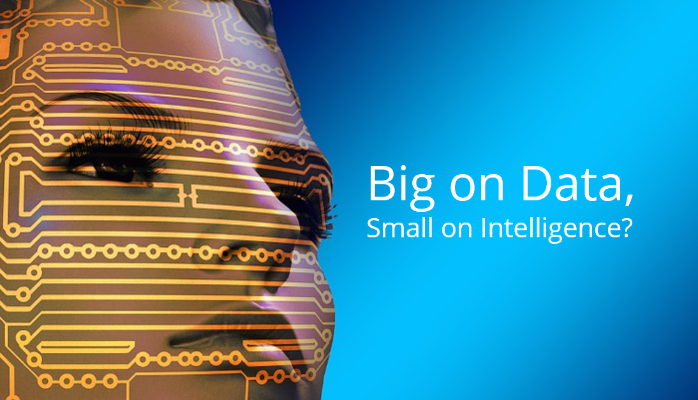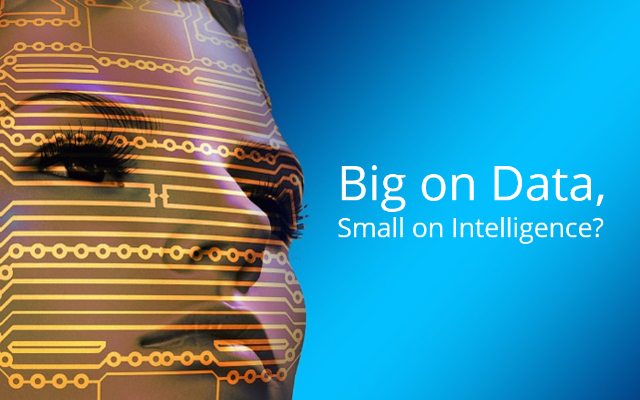Much is discussed about the 3 revered Vs of big data – Volume, Velocity and Variety.
But what else must marketers need to know to make better decisions?
Marketers now have access to enormous amounts of data, but does not mean it automatically leads to intelligence. The reasons for this are multitude; sometimes it’s just a dump of data, or lack of right tools and expertise to interpret the data to arrive at conclusions. Arguably, arriving at one big idea based on analysing multiple sets of data is no easy task.
Here’s a few suggestions to make data work to your marketing advantage.
Don’t let data override common sense: The sky sure looks grey on a rainy day, but that doesn’t mean that’s the color of sky elsewhere. Same goes for the data accrued from one segment of customer (online audience) or one region (metros). Drawing conclusions that leads to major marketing decisions based on isolated data sources is sure way for disaster.
Consider this, early this year, major Indian e-commerce giants went app-only; they cited the growing number of orders received from apps as rationale. In less than six months, they are reverting back to embrace the mobile web, thanks to the high number of churn (app uninstall).
Too much zooming in gives you bad picture: I haven’t seen a single marketer who’s not excited about showing personalised ads, sending emails with precise first and last name, better accuracy in product recommendations and so on. In theory, the more data they have about a customer, more accurate targeting can be achieved. In practice, the missing element in action is context and social nature of humans. Algorithms can seldom answer questions about the intent behind a customer’s behaviour, let alone the motive behind a purchase.
Smart marketers are trying to mitigate this problem of zooming in too much by setting broader context. Ping by Flipkart lets users to talk to friends and family in real time in order to make decisions and decide on what to buy. House Cart byTerraa (a grocery shopping app) lets multiple members of family add or modify the shopping cart before check out.
The size of your rear view mirror decides the crystal ball’s accuracy: Machine Learning, the heart of predictive analysis algorithms requires what is called as training data (rear view mirror) to predict future (crystal gazing). An average algorithm with deeper training data is far better than an advanced algorithm with shallow training data.
Remember how Target predicted-a-teen-girl-pregnant before her dad knew about it? Their in-house statisticians looked into a decade worth of organised data sets about their customers and had to cross tabulate it with what-newly-pregnant women buy.
Besides having a deeper data sets, it is equally important to have apples to apples kind of match amongst all the different data sets. All of this may take years to accrue and cost a fortune, but like the old maxim goes, the best time to plant a tree was 20 years ago, the next best time is today.
True, but not really: Most big data provides marketers with too many variables, but little data per variable; this gives rise to questionable relationships between parameters and thus leads to false information. In sum, the needle just got stacked up in a bigger, complex haystack.
Consider the failure of Google Flu Trends, it was the poster boy of big data and predictive analysis. It dint last too long basking in the glory, its reasons for failure are much analysed and there’s even a term for it – ‘Big Data Hubris’. In simple words, they were processing people’s search term associated with flu as a base to predict trends, it turns out that more than 80% of the time when someone thinks they have flu, they actually don’t. So, the data used by Google is true, but not really!
Avoid GIGO: “Garbage In, Garbage Out. Or rather more felicitously: the tree of nonsense is watered with error, and from its branches swing the pumpkins of disaster.” – Nick Harkaway
There’s no mincing words about this, if the inputs are compromised, then the outcomes are catastrophic. The problem gets accentuated for marketers the most as they deal with a lot of unstructured data (tweets, forum posts, blogs, etc.,) to arrive at consumer insights. Data from internet touch points is practically worthless without running them through semantic analysis, taxonomy classifications, and defined ontology instances.
In lack of order, metrics and hierarchies within data sets, big data only adds to ambiguity and can give out nothing more than distorted outputs.
Business objectives, biases, and blaming technology: The definitive way to make data work for any organization is to clearly define business objectives. Sounds like cliché but there’s a hidden gem in this statement. Are you using data to advance your business- hear customer sentiments to improve service, understand need-gap to introduce more products, improve operational efficiency, etc., or is it a case where CXO has an opinion and just needs some right data to metamorphose gut feel to concrete evidence?
It’s time we call spade a spade; Look at telecom and airline companies, they have access to huge volume of structured data with which they can profile their customers to the t. How many times have they used that information to make customers’ life better? Offer better tariff or notify when ticket prices are cheaper. They seem to do the exact opposite. On the contrary, ever wondered why people love Uber and Amazon so much? Here’s one of my reason to love them – Uber can notify you when the surge pricing drops to normal levels. Amazon offers price protection if the price drop occurred with seven days from of the delivery date.
It is not always about data & technology and what can be done with it. A business decision with bias as a preamble can’t be fixed by any data, there are hundreds of evidences hidden in plain sight to improve brand experiences, but I guess you can’t wake up someone who’s pretending to sleep.
The author is Vice President at Publicis Beehive, he tweets at @sree_raman. Views expressed are personal.
Article by channel:
Everything you need to know about Digital Transformation
The best articles, news and events direct to your inbox
Read more articles tagged: Digital Marketing, Featured






